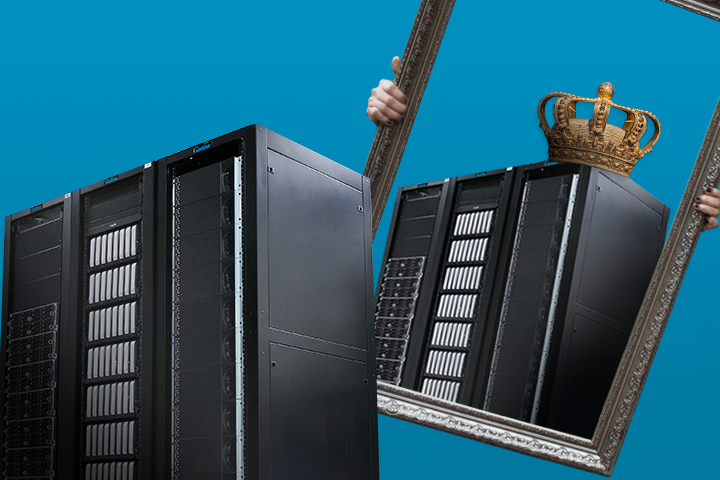The Emperor's New Infrastructure

While public cloud offers flexibility and scalability for many businesses, the cost benefit for telcos is just not adding up, according to Richard Doughty. Does opting for public cloud lead to infrastructure costs that are significantly higher compared with on-premises or private cloud models?
There are undoubtedly many situations where the flexibility, ease-of-access, and ubiquity that public cloud offers are well suited to the needs of enterprises, be it for start-ups hoping for hockey stick growth, bursty businesses with high load variance, or projects with a short lifespan where long-term infrastructure commitment is to be avoided.
This variety of applications is why the option of public cloud has created a lot of excitement over the last few years, with many noisy proponents. It’s undoubtedly driven a lot of architectural change in software, introducing microservices and containerisation that make it easier to deploy and operate in these environments, which is a good thing.
But in the telecoms industry in which we work, it’s not like this.
An aspect of public cloud that’s always been posited but which I’ve not seen proven is the cost benefit. Time and time again, I have never been able to make the financial case internally, or to prospects, for public cloud. To me, it just doesn’t add-up.
So when I saw this article the other day on one CTO’s experience of moving their applications away from the cloud to their own hardware, I thought maybe it was time to say something publicly about it, as it’s clearly not just us who see far more cost than value for our customers in our particular market.
There are lots of benefits of Software-as-a-Service (SaaS) for operators, though this is hardly a new concept – Application Service Providers have been around for a long time. Taking a turnkey solution from a supplier is a nice way to manage service levels, ensure you have clearly defined responsibilities and deliverables, and provide that single throat-to-choke that everyone likes to get their hands around if things go wrong, as they say.
We size and price infrastructure solutions for customers and prospects all the time. We’ve designed our platform to be cloud agnostic, so as not to tie our product cart to one platform horse, so to speak, so we’re regularly comparing Total Cost of Ownership for on-prem, public cloud, private cloud, and hybrid.
Now, it’s important to consider the types of solution that Cerillion provides, and to whom: typically, we deliver Digital Transfrormation, or to be more prosaic about it – we’re swapping out one large BSS/OSS stack for another. These are typically for extant businesses, well established in the market, with reasonable volumes of customers (from several hundred thousand to several million), and growth / churn that isn’t going to be stratospheric in either direction. Predictable businesses, to put it another way.
When we assess the Total Cost of Ownership over a five-year period, opting for a public cloud hyperscaler can result in costs that are approximately 2 to 2.5 times higher compared with on-premises or private cloud models.
Considered alongside other issues of public cloud, such as data sovereignty and data security, these significant cost issues compound the case for delivering all the benefits of SaaS from other infrastructure models that support it, whilst delivering much better value for money.
For the business we’re in and the customers we serve, it’s felt for a long time that public cloud is like the Emperor’s New Clothes. Is it only me that doesn’t see them?
Cerillion’s BSS/OSS suite is a cloud-neutral solution that supports public cloud, private cloud, hybrid cloud and on-premises deployments, with speed, consistency, and repeatability. Contact us today to discuss which deployment model is right for you.
This variety of applications is why the option of public cloud has created a lot of excitement over the last few years, with many noisy proponents. It’s undoubtedly driven a lot of architectural change in software, introducing microservices and containerisation that make it easier to deploy and operate in these environments, which is a good thing.
But in the telecoms industry in which we work, it’s not like this.
An aspect of public cloud that’s always been posited but which I’ve not seen proven is the cost benefit. Time and time again, I have never been able to make the financial case internally, or to prospects, for public cloud. To me, it just doesn’t add-up.
So when I saw this article the other day on one CTO’s experience of moving their applications away from the cloud to their own hardware, I thought maybe it was time to say something publicly about it, as it’s clearly not just us who see far more cost than value for our customers in our particular market.
There are lots of benefits of Software-as-a-Service (SaaS) for operators, though this is hardly a new concept – Application Service Providers have been around for a long time. Taking a turnkey solution from a supplier is a nice way to manage service levels, ensure you have clearly defined responsibilities and deliverables, and provide that single throat-to-choke that everyone likes to get their hands around if things go wrong, as they say.
We size and price infrastructure solutions for customers and prospects all the time. We’ve designed our platform to be cloud agnostic, so as not to tie our product cart to one platform horse, so to speak, so we’re regularly comparing Total Cost of Ownership for on-prem, public cloud, private cloud, and hybrid.
Now, it’s important to consider the types of solution that Cerillion provides, and to whom: typically, we deliver Digital Transfrormation, or to be more prosaic about it – we’re swapping out one large BSS/OSS stack for another. These are typically for extant businesses, well established in the market, with reasonable volumes of customers (from several hundred thousand to several million), and growth / churn that isn’t going to be stratospheric in either direction. Predictable businesses, to put it another way.
When we assess the Total Cost of Ownership over a five-year period, opting for a public cloud hyperscaler can result in costs that are approximately 2 to 2.5 times higher compared with on-premises or private cloud models.
Considered alongside other issues of public cloud, such as data sovereignty and data security, these significant cost issues compound the case for delivering all the benefits of SaaS from other infrastructure models that support it, whilst delivering much better value for money.
For the business we’re in and the customers we serve, it’s felt for a long time that public cloud is like the Emperor’s New Clothes. Is it only me that doesn’t see them?
Cerillion’s BSS/OSS suite is a cloud-neutral solution that supports public cloud, private cloud, hybrid cloud and on-premises deployments, with speed, consistency, and repeatability. Contact us today to discuss which deployment model is right for you.

